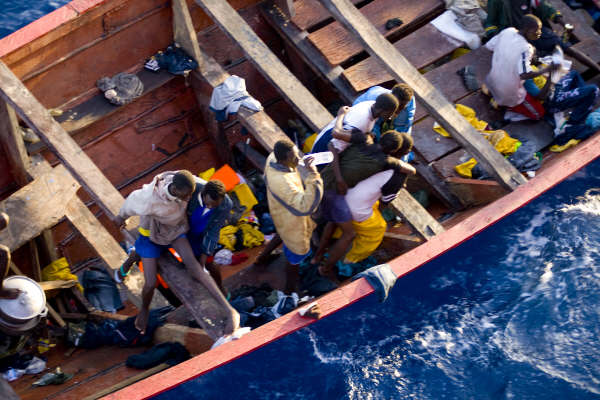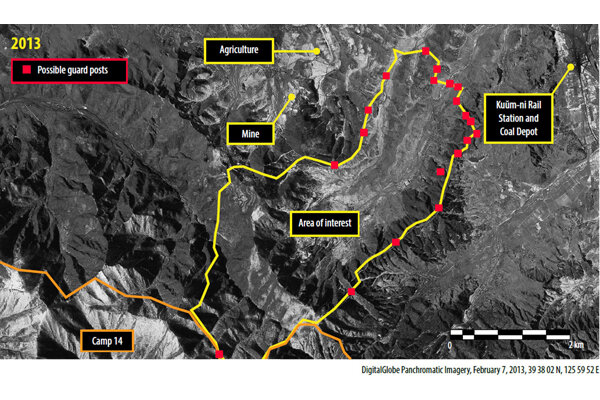Again and again… There was no cockpit-to-cockpit radio communication between the US and Russian pilots. So that ‘deconfliction’ line between the United States and Russia apparently goes to voicemail.
It was just a few days ago that Hawaii formally requested military emergency response operations due to the North Korea threat. Likely, the manner of which Russia maintains aggressive messaging, those two bombers were dispatched to test U.S. response and air defense systems.
FNC: A pair of Russian nuclear-capable bombers flew near Alaska Monday night, two U.S. officials told Fox News, coming as close as 100 miles from Kodiak Island — the first time since President Trump took office that Moscow has sent bombers so close to the U.S.
The two Russian Tu-95 “Bear” bombers flew roughly 280 miles southwest of Elmendorf Air Force Base, within the Air Defense Identification Zone of the United States.
The U.S. Air Force scrambled two F-22 stealth fighter jets and an E-3 airborne early warning plane to intercept the Russian bombers.
The American jets flew alongside the Russian bombers for 12 minutes, before the Russian bombers reversed course and headed back to their base in eastern Russia.
Last week in Moscow, Secretary of State Rex Tillerson said U.S.-Russian relations were at a “low point” while sitting next to Russian Foreign Minister Sergey Lavrov.
While Tillerson was in Moscow, three Russian bombers flew near the east coast of Japan, forcing the Japanese military to scramble 14 fighter jets at various times to intercept the bombers. A Russian spy plane also flew along Japan’s west coast.
The last time Russian bombers flew near the U.S. was July 4, 2015, when a pair of Russian bombers flew off the coasts of Alaska and California, coming as close as 40 miles to Mendocino, Calif.
Russian President Vladimir Putin called then-President Barack Obama to wish him a happy Independence Day while the bombers cruised the California coastline.
***
WaPo: Gen. Paul Selva recently became the first Pentagon official to state publicly that Russia has deployed a land-based cruise missile in direct violation of its treaty obligations to the United States. Selva, who serves as vice chairman of the Joint Chiefs of Staff, said in testimony before the House Armed Services Committee: “We believe that the Russians have deliberately deployed it in order to pose a threat to NATO.” He also noted — to the best of his knowledge — that “they do not intend to return to compliance.”
In other words, the Russians have calculated that it costs them more to fulfill their treaty commitments than to break them. The only proper response to this provocation is to increase the costs and change Russia’s calculation.
The agreement in question is the Intermediate-Range Nuclear Forces Treaty, which the Soviet Union and the United States signed in 1987 to eliminate an entire class of land-based missiles with a range of 500 to 5,500 kilometers. Reasons for the treaty date back to the late 1970s, when the Soviet Union deployed intermediate-range nuclear missiles to Europe, reducing warning times and threatening to divide Europe from North America. NATO responded by deploying U.S. intermediate-range nuclear missiles in 1983. The increased tensions ultimately led to arms-control negotiations and the landmark INF Treaty.
***
The Tu-95 is the worlds fastest propeller driven aircraft in the world today. The Tupolev Tu-95 (Russian: Туполев Ту-95; NATO reporting name: “Bear”) is a large, four-engine turboprop-powered strategic bomber and missile platform. First flown in 1952, the Tu-95 entered service with the Soviet Union in 1956 and is expected to serve the Russian Air Force until at least 2040.[1] A development of the bomber for maritime patrol is designated Tu-142, while a passenger airliner derivative was called Tu-114.
The aircraft has four Kuznetsov NK-12 engines, each driving contra-rotating propellers. It is the only propeller-powered strategic bomber still in operational use today. The tips of the propeller-blades move faster than the speed of sound, making it one of the noisiest military aircraft.[2] Its distinctive swept-back wings are at a 35° angle.
Design and development[edit]
A Tu-95MS in 2007.
A Tu-95 showing its swept wing and anti-shock bodies
The design bureau led by Andrei Tupolev designed the Soviet Union’s first intercontinental bomber, the 1949 Tu-85, a scaled up version of the Tu-4, a Boeing B-29 Superfortress copy.[3]A new requirement was issued to both Tupolev and Myasishchev design bureaus in 1950: the proposed bomber had to have an un-refueled range of 8,000 km (4,970 mi)—far enough to threaten key targets in the United States. Other goals included the ability to carry an 11,000 kg (12.1 ton) load over the target.[citation needed]
The big problem for Tupolev was the engine choice: the Tu-4 showed that piston engines were not powerful enough to fulfill that role, while the fuel-hungry AM-3 jet engines of the proposed T-4 intercontinental jet bomber did not provide adequate range.[4] Turboprops offered more power than the piston engines and better range than jets available for the new bomber’s development at the time, while offering a top speed in between these two alternative choices.
Tupolev’s proposal was selected and Tu-95 development was officially approved by the government on 11 July 1951. It featured four Kuznetsov[5] coupled turboprops, each fitted with two contra-rotating propellers of four blades each, producing a nominal 8,948 kW (12,000 eshp) power rating. The then-advanced engine was designed by a German team of ex-Junkers prisoner-engineers under Ferdinand Brandner. In contrast, the fuselage was conventional: a mid-wing cantilever monoplane with 35 degrees of sweep, an angle which ensured the main wing spar passed through the fuselage in front of the bomb bay. Retractable tricycle landing gear was fitted, with all three gear strut units retracting rearwards, with the main gear units retracting rearwards into extensions of the inner engine nacelles.[citation needed]
The Tu-95/I, with 2TV-2F engines, first flew in November 1952 with test pilot Alexey Perelet at the controls.[6] After six months of test flights this aircraft suffered a propeller gearbox failure and crashed, killing Perelet. The second aircraft, Tu-95/II featured four of the 12,000 ehp Kuznetsov NK-12 turboprops which proved more reliable than the coupled 2TV-2F. After a successful flight testing phase, series production of the Tu-95 started in January 1956.[5]
A Tu-95MS simulating aerial refueling with an Ilyushin Il-78 during the Victory Day Parade in Moscow on 9 May 2008.
For a long time, the Tu-95 was known to U.S./NATO intelligence as the Tu-20. While this was the original Soviet Air Force designation for the aircraft, by the time it was being supplied to operational units it was already better known under the Tu-95 designation used internally by Tupolev, and the Tu-20 designation quickly fell out of use in the USSR.[citation needed] Since the Tu-20 designation was used on many documents acquired by U.S. intelligence agents, the name continued to be used outside the Soviet Union.[citation needed]Initially the United States Department of Defense evaluated the Tu-95 as having a maximum speed of 644 km/h (400 mph) with a range of 12,500 km (7,800 mi).[7] These numbers had to be revised upward numerous times.[citation needed]
Like its American counterpart, the Boeing B-52 Stratofortress, the Tu-95 has continued to operate in the Russian Air Force while several subsequent iterations of bomber design have come and gone. Part of the reason for this longevity was its suitability, like the B-52, for modification to different missions. Whereas the Tu-95 was originally intended to drop free-falling nuclear weapons, it was subsequently modified to perform a wide range of roles, such as the deployment of cruise missiles, maritime patrol (Tu-142), and even civilian airliner (Tu-114). An AWACS platform (Tu-126) was developed from the Tu-114. An icon of the Cold War, the Tu-95 has served not only as a weapons platform but as a symbol of Soviet and later Russian national prestige. Russia’s air force has received the first examples of a number of modernised strategic bombers Tu-95MSs following upgrade work.





